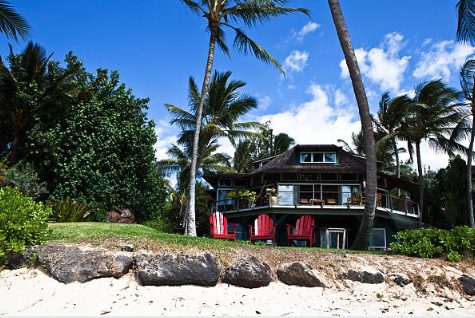Recent industry changes are making it tougher to secure or renew homeowners insurance in Hawaii. Here’s how to stay ahead — whether you’re buying, selling, or currently own a home.
If you’ve tried shopping for homeowners insurance lately or received a renewal notice that made your heart skip a beat — you’re not alone.
According to a recent Pacific Business News article, “Single-family homes join Hawaii’s insurance crisis,” more carriers are pulling back or tightening requirements across the islands. From roof age to proximity to the ocean, insurers are factoring in a wide range of risks, and homeowners are feeling the ripple effects.
To help clients navigate this evolving landscape, I’ve been in close contact with industry experts to understand how these changes impact you. Here are some key takeaways:
If You’re Buying a Home
Start the insurance process early — ideally 2 to 3 weeks before closing. Last-minute surprises are common now, and some homes may require more documentation or even improvements before they qualify for coverage.
If You’re Already a Homeowner
- Renewals aren’t automatic. Some carriers are sending notices 30–100 days in advance with new terms or non-renewals.
- Improvements matter. If you’ve upgraded your home (solar panels, additions, or major renovations), let your insurance agent know — it could affect your coverage or help you qualify for better rates.
- Keep it clean and clear. Insurance inspections are more detailed than ever. Trim trees near your roof, clear out clutter, and stay on top of repairs.
If You’re Selling a Home
Provide buyers and agents with any documentation you have on past upgrades — especially electrical, plumbing, and roof work. This can help smooth the insurance approval process for your future buyer.
Thinking of Filing a Claim?
Call your agent before you file. Claims follow the individual — not just the property — and a claim in the past three years can make it harder to get new coverage. In some cases, it may be better to pay out of pocket for smaller repairs.
Common Red Flags
- Old or wood shake roofs (often uninsurable unless replaced)
- Properties close to the ocean (some carriers now require homes to be 1,000+ feet inland)
- Illegal additions or non-conforming structures (these may be excluded from coverage or not rebuildable)
- Buildings with no master policy (unit owners may only be able to insure the interior space)
Flood Insurance Updates
New FEMA maps have lowered premiums in many areas, but properties that touch high-risk zones (AE or VE) still require flood insurance if you have a mortgage. A local agent can help you determine the best coverage and options.
Final Thought
Navigating insurance these days takes more than checking a few boxes — it takes planning, documentation, and knowing who to ask. I’m here to help you connect with trusted resources and stay informed so that buying, owning, or selling a home in Hawaii is a smooth and rewarding experience.
Questions about your specific situation? Please reach out – I’m happy to help.

 Facebook
Facebook
 X
X
 Pinterest
Pinterest
 Copy Link
Copy Link
